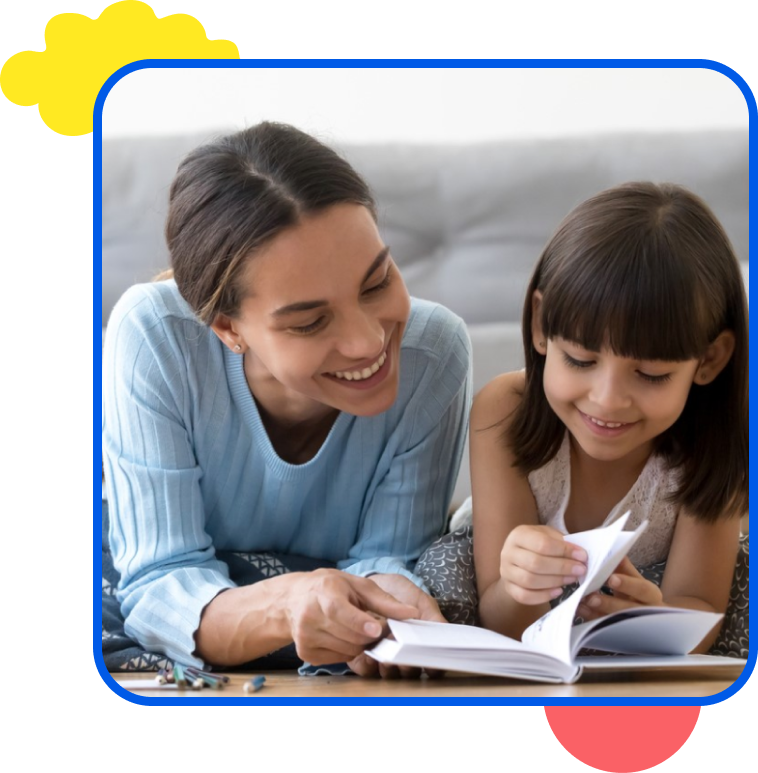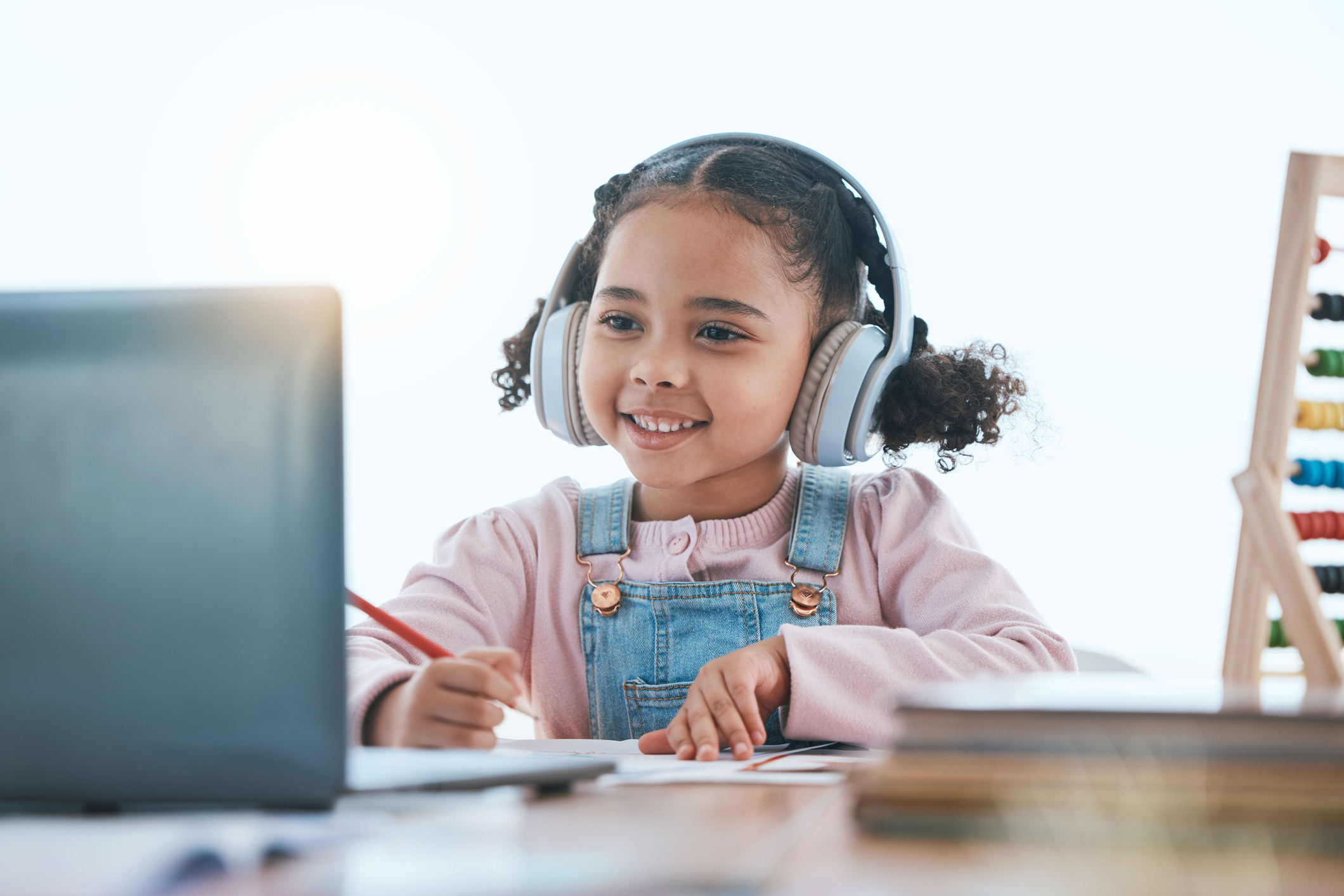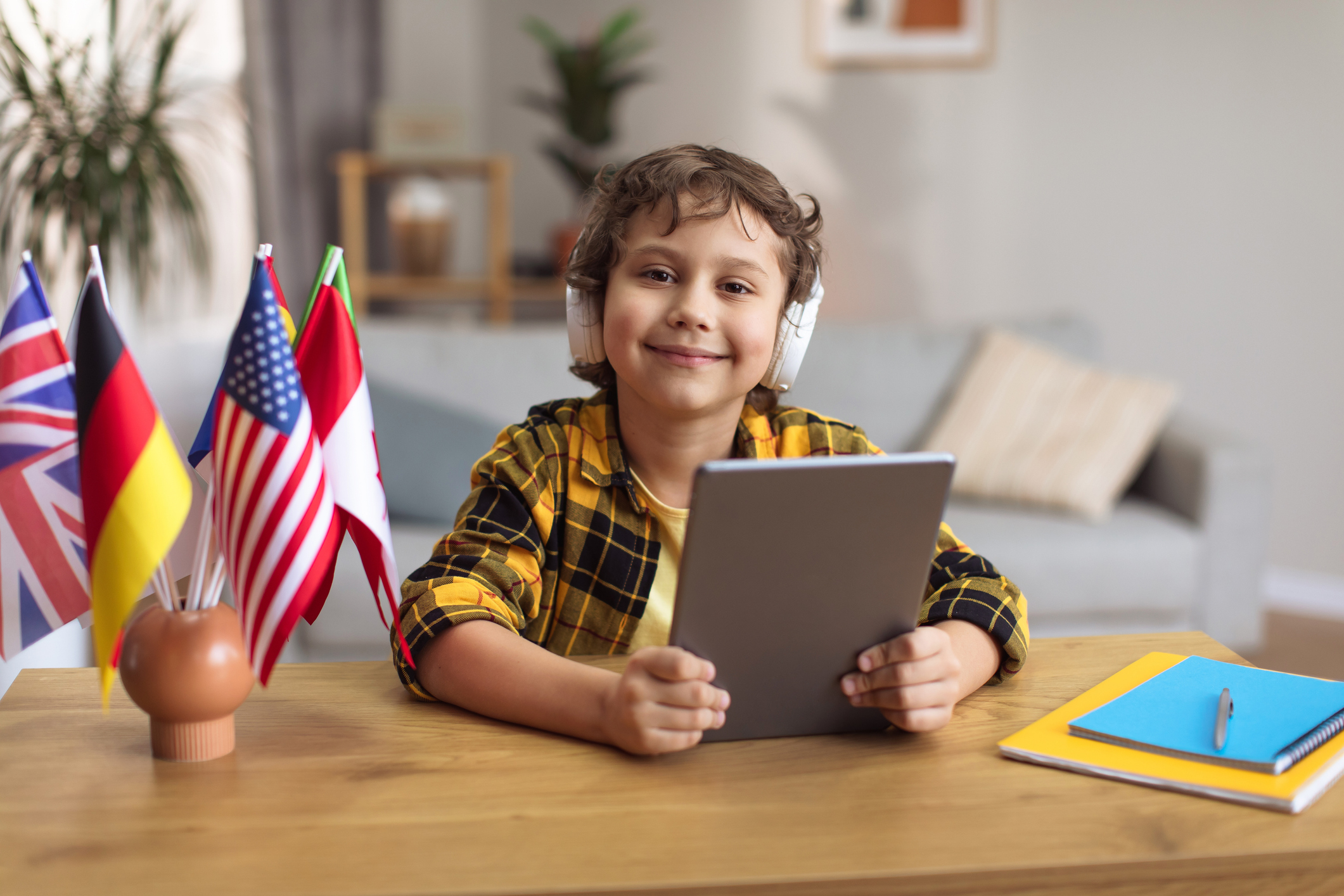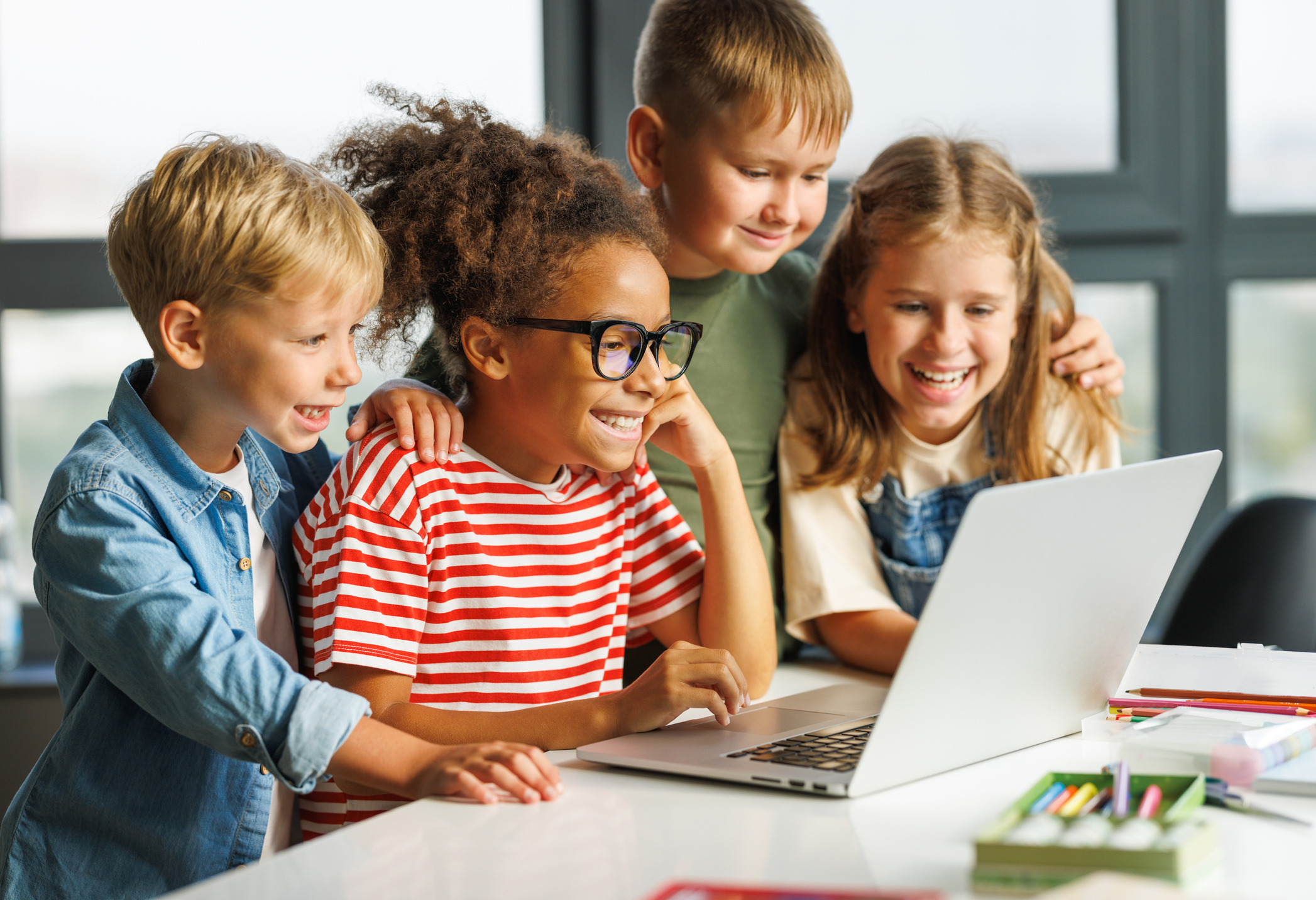Raising Bilingual Preschoolers In A Monolingual Household



Whether you have one, two, or three on your hands, raising bilingual preschoolers doesn’t have to be hard. Even in a monolingual household where you don’t speak the language you’re teaching them, there’s no reason you can’t raise a bilingual child.
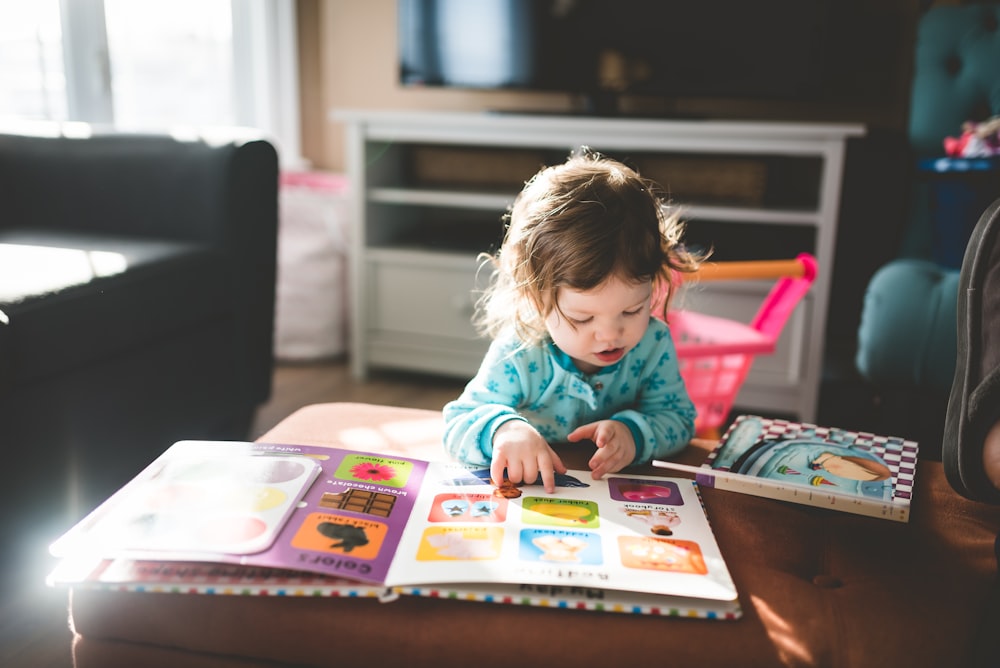
You already know that raising children can often be challenging if you’re a parent. But when you add in trying to raise bilingual children in a monolingual household, things get even more difficult.
After all, how are you supposed to introduce your child to a second language if you or your partner don’t speak the language you’re trying to teach them?
The bad news is that raising a bilingual preschooler presents a few inherent challenges.
But the great news is that it’s entirely possible to raise bilingual preschoolers even in monolingual households.
Below, we’re going over some of the best tips and tricks for bilingual language development in a monolingual home and how you can easily teach your child a second language even if you don’t speak that language yourself.
Teach Them The Importance Of Being Bilingual
Your kids are just like you. And when you care about something, they’ll usually learn to care about it. So if bilingualism is something you genuinely care about, your child will, in turn, learn to care about it too.
Even if you’re not bilingual, you should still do everything you can to show your children that you genuinely believe in the importance of their being bilingual.
Teaching them the advantages of being bilingual from a young age can help when they’re first getting started with bilingual education.
Whether you have family in another country or you’re a new American yourself, you must take the time to explain to your child that being bilingual is important.
Not only are there many cognitive benefits to being bilingual. But there’s also much to be said about knowing one’s cultural heritage and staying in touch with one’s roots.
If your child genuinely understands the importance of learning a second language, they’ll be much better suited to learning that language in the future.
Learn What You Can
If you want your preschooler to learn a new language at a young age, you should lead by example and learn too. This shows them that learning a new language can be fun and exciting right from the start.
Of course, you don’t need to become proficient in a second language to show your kids that bilingualism is important. But the more you can expose them to a new language, the better.
Try and learn what you can about their new language, even if it’s just a few simple words, like “hello” or “goodnight.”
If your child is not currently attending a bilingual preschool or any other foreign language program, it’s imperative to sit down with them and help them learn in one or both languages.
As an adult, it’s not as easy to learn a new language. But that doesn’t mean it’s impossible.
Learn what you can along with your child, and you’ll be well on your way to helping them master word learning in their new language.
Maximize The Child’s Exposure To The Second Language
The more your child is exposed to a new language, the sooner they’ll be able to master it.
Therefore, you must find every opportunity to get them to use their new vocabulary.
Something as simple or routine as brushing their teeth or getting them ready for bed can become an excellent learning opportunity if you put your mind to it.
Even if you’re not fluent in their new language, you can still ask them questions about what they’re doing and prod them to answer in their new language.
On top of that, there are plenty of language learning apps, bilingual books, and many other resources you can use to expose your child to a second language.
Alternately, if you know anyone, maybe a friend, grandparent, or relative who speaks the language, you should try to have your child spend some time with them.
Exposure is a crucial aspect of vocabulary development and oral language learning in early childhood.
So the more your child is exposed to people who are native speakers, the faster they’ll learn to master things like pronunciation, idioms, and other basic language abilities.
Listen To Bilingual Audio Books
Even if you can’t or don’t know anybody that speaks the language, there are still plenty of ways to expose your child to the sounds of their new language, even if they’re growing up in a monolingual household.
Bilingual audio books can be a great way to help your child not only learn the sounds of language, but also to learn how to associate those sounds with words and stories that are interesting to them.
Fortunately, there are plenty of bilingual audio books available, which are usually either free or very affordable compared to purchasing physical books.
Additionally, you might also want to consider having your child spend time watching YouTube Kids or other educational channels where they can find and discover all sorts of new language learning abilities.
Check out these great resources for kids learning French.
Be Their Biggest Support
As their parent, you must be your child’s most significant support, especially when learning something new. You need to encourage their learning and celebrate even the small victories regularly.
Studies show that parental involvement in a child’s education is closely correlated with academic achievement.
In one Chilean study, researchers looked at 498 parents whose children were in the second and third grades at 16 different elementary schools.
The idea was to study different levels of parental involvement, classed as either high, medium, or low, and determine whether there was any correlation with students’ academic achievement.
Results showed conclusively that there were differences in the academic scoring of the children, dependent on how involved their parents were. Children whose parents had high or medium levels of involvement generally had higher achievement levels than those whose parents had low levels of involvement.
In other words, we can say that being involved and supporting your child’s language acquisition truly can help them succeed in the long run.
Even if you don’t speak the language they’re learning, do your best to encourage them to learn and make the most of their bilingual education.
Start As Early As Possible
Both monolingual and bilingual children have something in common: their brains are like sponges, ripe for discovering and learning new things.
Therefore, the sooner you get your preschooler started, the sooner they’ll master their new language. If you start them young enough, they might become fluent faster than older children.
A great deal of research indicates that babies can pick up on the subtle aspects of language, such as tone and inflection, even before they begin speaking in full words and sentences.
Studies also show many cognitive benefits of learning a second language at a young age. For instance, learning a second language at a young age is associated with better memory recall, concentration, and focus.
Even later on in life, bilingualism has benefits. One study by a Canadian psychologist found that knowing at least two languages can prevent or delay the development of certain conditions like Alzheimer’s disease and other forms of dementia.
Consider Enrolling Them In An Immersive Language Learning School
Going back to the importance of exposure, one of the best things you can do for bilingual preschool children is to have them involved in an immersive language learning environment.
This becomes even more important if they’re raised in a household where the parents speak only one language.
Fortunately, there are many bilingual preschools and programs and online learning portals that can help your preschooler master their communication abilities in both a majority language or in minority languages.
LingoCircle offers fully immersive bilingual education classes for children aged three to fifteen. Your child will learn together with other kids the same age and with the same fluency.
Our teaching model is based on an expert-built curriculum dedicated to dual language child development. In other words, your child will learn everything from vocabulary to grammar, and all while having fun.
Click here to start your free trial today!
Give Them Time
Finally, it’s essential to give your child time to learn, especially if they’re living in a monolingual household.
For adults, research shows that it can take anywhere from 480 to 720 hours to reach basic fluency in a new language. And even though children have better language learning abilities and can learn faster than adults, it will still likely take them a while to become proficient in a second language.
Studies also show that 50% of a child’s learning ability is developed by the age of four, and another 30% is learned by the age of 8. In other words, most of a child’s learning capabilities are developed during their earlier years.
Therefore, the older a child is, the more challenging it can be, and the more time it can take for them to learn a second language. So make sure to give them plenty of time and encourage them throughout their learning experience.
Suppose that their exposure to language has primarily been in one language. In that case, it might also take longer for them to learn a second language vocabulary and associate it with their existing language skills.
Just remember that language development doesn’t happen overnight.
But the more exposure they get to the new language, and the more support and encouragement they get from you, the sooner they’ll be able to master more than one language.
Frequently Asked Questions About Bilingual Preschoolers
Now that you know the best ways to raise bilingual children in a monolingual household, let’s review some of the most frequently asked questions we hear from parents.
How can I teach two languages at the same time?
Teaching two languages simultaneously can be tricky, especially if you only speak one of the two languages you’re trying to teach your child. However, there are many free resources available, games, and language learning apps that you can use to help your little one become bilingual.
How does growing up in a bilingual household affect a child?
There has been a great deal of research to show that being bilingual or multilingual can positively impact a child’s natural development. Studies show that bilingual children have better focus than monolingual children. Being multilingual also increases problem-solving abilities, creativity, multitasking skills, and many other cognitive benefits.
Does speaking two languages to a baby confuse them?
Parents often fear that having two languages spoken in the home can harm their child’s language development. However, there is no evidence to indicate that this is true. Children are extremely sensitive to things such as tone and inflection. Therefore, they can pick up on speech cues and learn no matter what language is spoken.
What should I do if my preschooler isn’t speaking by two or three?
If your child has reached the age of two or three, and they’re still not speaking, it might be time to see a professional. Both pediatricians and speech language pathologists can determine whether your little one has any hearing or learning disabilities. They will likely recommend speech therapy if needed.
How To Teach Language Proficiency In A Monolingual Household
As your preschooler learns and discovers all the world has to offer, it’s your job to be there for them and help them out whenever you can. And while there are plenty of ways to encourage learning a second language in a monolingual home, there’s no substitute for formal bilingual education.
LingoCircle is an online language school for children between three and fifteen years old.
Are you interested in enrolling your child in our virtual classes? Click here to get their first lesson for free!
Contact:
https://wlafnl.com/https://dialinas.gr/textguard/https://expertechinternational.com/https://www.sagarkitchenware.com/https://careers.sl/?post_type=job_listing&p=13707https://wataugahabitat.org/https://salvadoralvarado.gob.mx/https://mik.edu.vn/https://careers.sl/https://muvaimart.in/


Simple Ways to Learn a Second Language at Home
Get resources and tips to help supplement your bilingual education journey at home.
By providing your email you are signing up to receive emails from Bilingual Bebe. Privacy Policy
